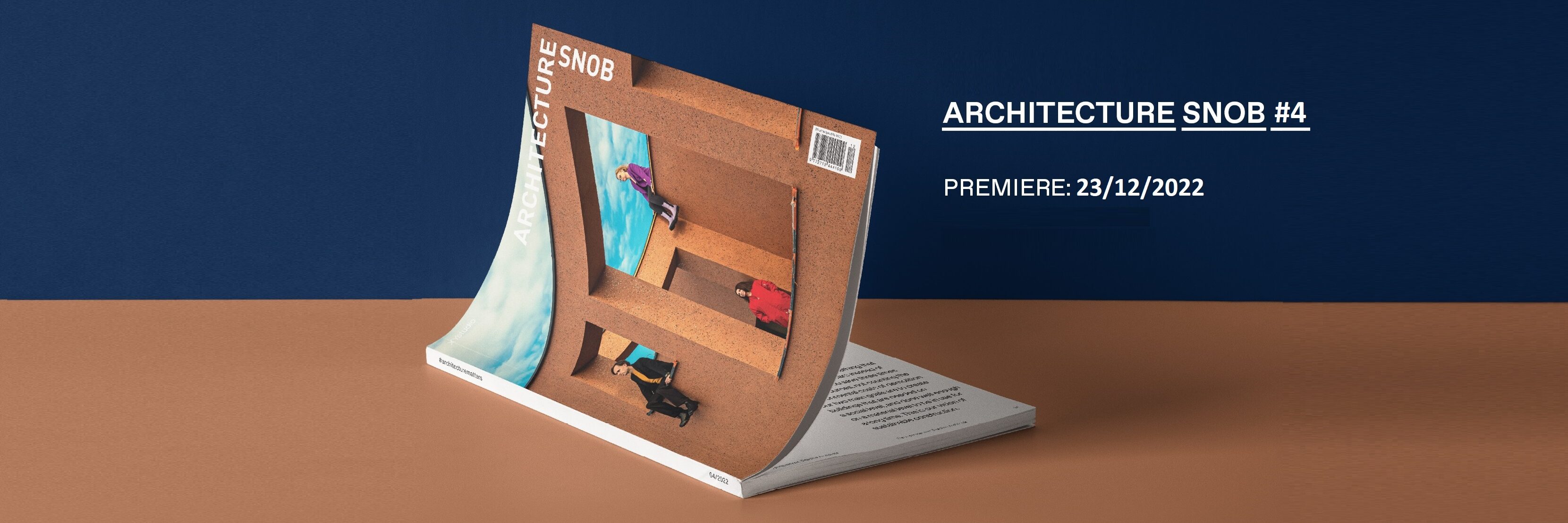The fourth issue of the architectural magazine “Architecture Snob” has its premiere just before Christmas, on December 23, in the nationwide distribution of Empik stores. The motto of the latest publication is education – the editors look at the topic from different angles, and the people invited to the interviews point out the role of empathetic, sustainable and universal design, which is in the interest of the entire society.

The new issue opens with an interview with architects from xystudio architectural practice in Warsaw in 2004: Filip Domaszczyński, Marta Nowosielska, and Dorota Sibińska. The trio of designers specializes in public buildings, mainly care, and educational institutions, and has been setting new design standards for the youngest for years. They are also interested in nursing homes, for example for people in the crisis of homelessness – including the famous house in Jankowice, the implementation of which not only won many awards but also opened discourse on the need for empathetic design for social groups that marginalized. In an honest conversation with the editor-in-chief of “Architecture Snob” – Marcin Szczelina – the faces of xystudio talk about the backstage of the construction of breakthrough buildings and share their architectural know-how.
The new issue also includes an interview with Jems Architekci – for years on the podium of the most important Polish architectural studios. From the perspective of a long presence on the market, they share their thoughts on changes in design and the role of an architect.
“What we do is incompatible with living processes, the functioning of the world. The relationships of countless organisms, and the flows, and dissipations of energy. The contemporary mainstream of construction is about the opposite – separating oneself from the world with an increasingly thick layer of insulation – Maciej Miłobędzki shares a bitter reflection. In another interview, Robert Majkut emphasizes the role of a firm stance in the way of creating the world, which he encourages experienced designers, who he sees as generators of change. They are certainly the heroes of the conversation conducted by the director of programs and awards of the Mies van der Roh Foundation – Ivan Blasi – that is Marta Peris and José Toral from the Barcelona studio Peris+Toral Arquitectes. They talk about ways to deal with the housing crisis, which is severe throughout Europe. In their work, they try to contribute to changing the applicable regulations to those that will be friendlier to people.
Anna Wręga and Kaja Nosal from ONTO studio talk about education in the context of creating friendly exhibition spaces. For this duo, architectural accessibility begins with conscious design, which must be inclusive and include people with various specific needs, often mutually exclusive, into the space. Responsibility for well-being also rests on the shoulders of interior designers, as Adam Pulwicki, the founder of the PULVA studio, talks about in another interview.
The periodical also has space for discussions about art and culture, which play an important role in the development process, and education in these fields has transformative power. Positive changes are also generated by social campaigns in which the architectural community is involved. The president of the foundation, Jurek Owsiak, talks about the fifth edition of the one organized by “Architecture Snob” for the Great Orchestra of Christmas Charity. By the way, he shares his observations on the architectural development of Warsaw.
As always, “Architecture Snob” closes with a “Sustainability epilogue”, where questions about the academic experience from the lecturer’s perspective, the education system, senses, and her projects and plans are answered by Dr. Joanna Jurga – a product and space designer. The magazine encourages circularity not only with the voices of people invited to talks but also with the method of production. As the only publishing house in 2022, it was qualified for the report “Responsible Business in Poland. Good Practices. Printing is handled by Drukarnia Akapit, which uses ecological paper and printing techniques that reduce the carbon footprint. Under the magazine’s hashtag, #architecturematters, there is a concern for a smart design that takes into account the well-being of the planet and the people who inhabit it.




